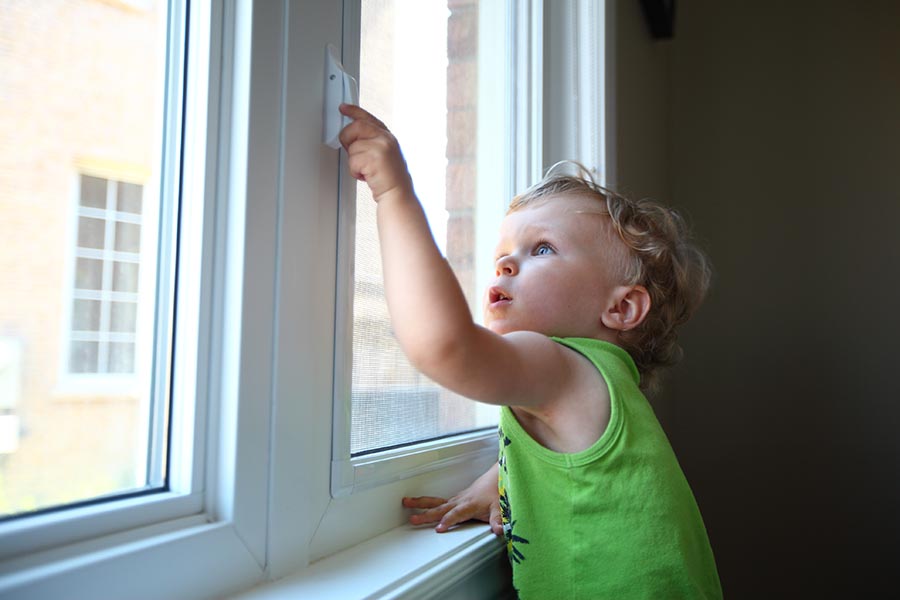 There’s no way around it: If you are a new parent or are new to having children in your home, you will need to make a few adjustments. Some of these modifications are free, easy, and intuitive, while others will require a little more effort and perhaps a small investment. Here are some items, big and small, that you will want to consider when creating a child-friendly home.
There’s no way around it: If you are a new parent or are new to having children in your home, you will need to make a few adjustments. Some of these modifications are free, easy, and intuitive, while others will require a little more effort and perhaps a small investment. Here are some items, big and small, that you will want to consider when creating a child-friendly home.
General Adjustments
- Baby Gates: You will want to invest in baby gates to limit access to rooms and off-limit areas to the little ones. Only use gates that are attached to the wall (not a pressure gate) at the top of stairs.
- Babyproof Your Fireplace and Hearth: You can do this in several ways: use a baby gate around the area, use a fireplace screen, or use a soft edge and corner guards, for example. Apartment Therapy offers some stylish ways to convert your fireplace into a safe area for babies and kids.
- Window Guards: Depending on the type of windows you have, there are different ways to make them safer for children. This parent guide explains window types and kid-proofing.
- Cordless Window Blinds: It is easy to find cordless window blinds these days; Parents offers more information on the choices. And if new blinds aren’t in the budget, head over to POPSUGAR to see nine ways to make your blinds child safe.
- Anchor Unbalanced and Heavy Furniture To the Wall or Floor: Bookshelves, refrigerators, dressers — kids like to climb on furniture, and heavy furniture can fall. Make sure your television is secure and can’t easily topple over. Read more about what to secure and how to do so on the Culture of Safety website.
Kitchen
- Secure the Refrigerator: Childproof locking devices made for securing refrigerators come in many shapes, sizes, and prices. Parent Guide has more information, as well as additional advice: For example, make sure to keep under the fridge clean because small hands can get under there!
- Oven Safety: Use knob covers on the oven or remove the knobs when not in use. Latches are very inexpensive and will ensure children can’t accidentally open a hot oven.
- Cabinet Latches: Easy to use, affordable, and trustworthy, cabinet latches are a no-brainer.
- Move and Store Cutlery and Knives: This is also a pretty intuitive tip. Head over to Houzz for more information on how to reduce accidents in the kitchen.
Bathroom
- Lock the Toilet: Yes, you do need to lock down your toilet lid, for a few reasons: to prevent toddlers from accidentally falling in; to protect young fingers from being hurt by a heavy, closing lid; and to prevent little ones from throwing toys and other items (like cell phones) into the toilet. Trust us, this one is important.
- Adjust the Water Heater: Adjust your water heater so that the temperature at the faucet is no more than 120 degrees Fahrenheit (48.9 degrees Celsius) when on the hottest setting.
- Keep Medication Out of Reach: Either use cabinet locks or move medications higher out of reach to be sure youngsters can’t get their hands on them.
- Unplug Appliances: Keep the hair dryer unplugged when not in use. Consider installing a ground-fault circuit interrupter, which stops the flow of electricity should it come into contact with water
Electronics
- Power Strips: Use power strip covers that slide over your existing power strip and have a cutout from which the cords can hang.
- Electrical Outlets: There are a variety of plug caps available, from simple plastic covers to squeeze-type locking guards that adults can remove but kids can’t. Keep in mind that the common plastic inserts can be a choking hazard. “Opt for self-sliding outlet covers,” advises This Old House. “These covers slide closed when nothing is plugged in and prevent a child from working their fingers into the socket.” If you need to use the outlet, outlet covers that encase plugged-in cords are also available.
- Secure and Shorten Cords: Avoid accidents that can be caused by tripping or pulling down appliances by making sure cords are as short as possible, and if on the ground, secure. Parent Guide has more information on its informative “How to Baby Proof Everything Electrical” online guide.
For more information about keeping your youngsters safe in and around your home, head over to Expertise, which offers advice ranging from how to childproof furniture to garage and outdoor safety. And Parents has an essential and extensive guide on babyproofing and childproofing that covers every area of the home.
In late April, we will cover adjustments you can make to have a home to suit older adults.

